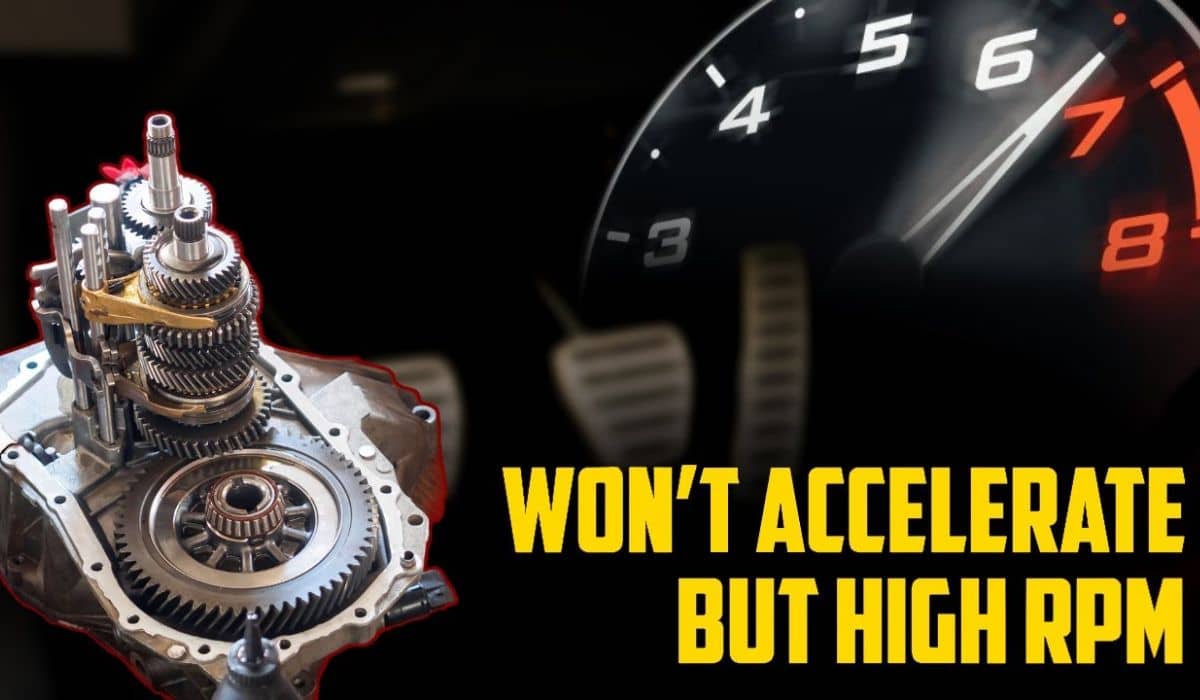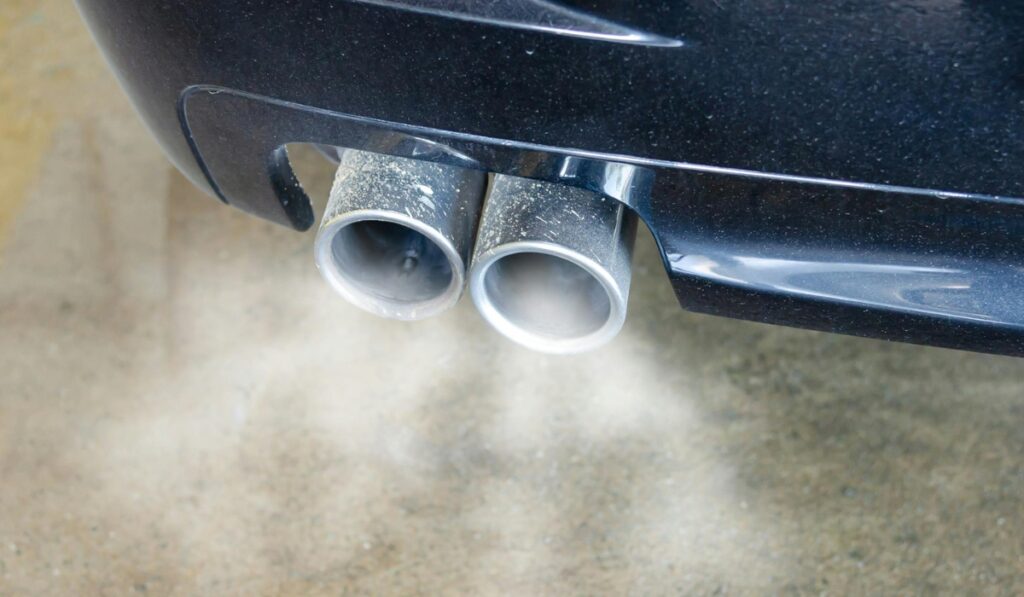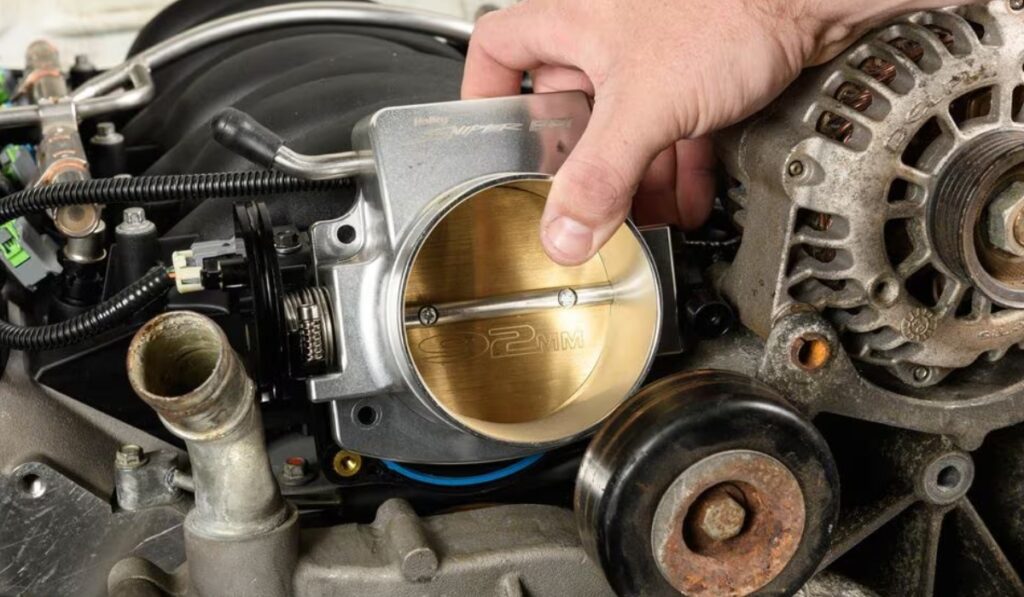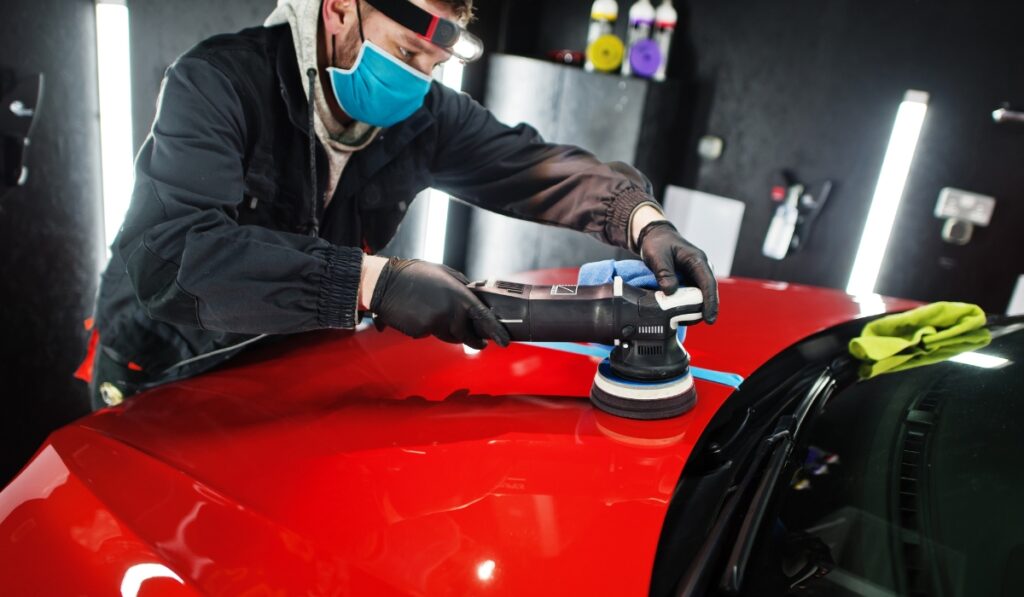It can be incredibly frustrating when you press down on the accelerator pedal in your car, the Car Won’t Accelerate but RPMs Go Up. This problem not only hampers your driving experience but can also be dangerous when trying to merge or make high-speed maneuvers.
Diagnosing the root causes and fixing acceleration issues promptly is essential. Whether you are mechanically inclined or not, this guide will help you get your sluggish vehicle up to speed!
Understanding the Symptoms
Let’s first build a strong understanding of what exactly happens when your engine revolution increase but the car does not accelerate in response.
The rpm or revolutions per minute indicate the number of times the crankshaft completes a full revolution in the span of one minute. It directly correlates with engine speed and power output.
Acceleration refers to how quickly the vehicle gains speed when you press the gas pedal. Typically, higher rpm results in faster acceleration. So when the rpm rises without a proportional increase in acceleration, something is limiting the engine power from reaching the wheels.
You’ll immediately notice the lack of acceleration when driving, even though the sound of revving engine conveys the sensation of speed. The car may feel sluggish in general or only at certain speeds and gears.
There may be vibrations or jerky movements as you press harder on the gas pedal in an attempt to accelerate. Odd smells, slipping gears, difficulty shifting, or sounds like squealing can point to specific causes.
I once pulled a heavy load in my pickup truck. It struggled to get to highway speed and seemed underpowered the whole trip.
The transmission fluid was burnt when I checked it later, explaining the acceleration issues. Understanding the accompanying symptoms helps narrow down problems.
Potential Causes
Now that we recognize the acceleration problem, let’s explore some of the common mechanical issues that can cause reduced engine power reaching the wheels.
Transmission Problems
The transmission is vital for transferring engine torque to the drive wheels. Issues like low fluid, slipping gears, torque converter problems, or faulty electronic shift controls can prevent proper acceleration:
Low fluid levels or leaks can make the transmission slip, causing acceleration problems. Burnt, discolored fluid indicates wear and tear to internal components.
The torque converter couples the engine output to the transmission. Problems here will affect acceleration from a stop.
Electronic transmission controls regulate shifting based on sensor inputs. Faulty speed, position, or pressure sensors can cause irregular shifting and acceleration.
I once mistakenly drained all the transmission fluid instead of the engine oil during a DIY oil change. The car barely crawled home at 20 mph with the engine screaming above 5000 rpm. Replacing the fluid solved that embarrassing lesson.
Clutch Problems
The clutch connects the engine to the manual transmission input shaft. Wear, damage or problems in the hydraulic system can all affect acceleration:
Over time, the friction surfaces of the clutch disc and pressure plate wear out. This causes the clutch to start slipping and acceleration suffers.
Issues in the hydraulic clutch fluid system like leaks, air in the lines, or a failing master/slave cylinder unit will prevent full clutch engagement.
Weak or improperly adjusted clutch pedal linkage can also prevent smooth power transfer to the drivetrain.
My old pickup truck had a worn clutch disc that would slip excessively when hauling any load. Replacing the clutch components solved those scary merging situations.
Fuel System Problems
Fuel system issues that affect fuel pressure, volume, and quality can all limit engine power. Common causes include:
A clogged fuel filter leads to restricted fuel flow, reducing engine power.
Wear and tear on the fuel pump and regulator affects fuel pressure and volume delivery to the engine.
Contaminants in the fuel tank also get transferred to the injectors/carburetor, affecting acceleration.
I found my fuel filter clogged with debris after using some shoddy quality gasoline. Replacing it restored the acceleration and engine power. Invest in quality fuel!
Faulty Throttle/Sensors
The throttle system controls engine power by metering air intake. Issues here can limit acceleration:
A bad throttle position sensor provides wrong data to the engine computer, leading to incorrect spark timing and fuel delivery.
The accelerator pedal position sensor can similarly give faulty readings to the throttle system and computer.
Wear and tear of throttle body components like shafts, springs, bearings affect throttle response.
Software glitches in the electronic throttle control systems can affect acceleration as modern cars lack a direct cable linkage.
Practical Tip : Resetting the electronic throttle control system by disconnecting the battery resolved my acceleration issues after a faulty sensor replacement. The engine computer adapted to the new sensor after the reset.
Diagnostic Steps
Finding the exact cause requires methodically checking components that impact acceleration:
Check Transmission Fluid
Locate the transmission dipstick, usually towards the back of the engine bay. The owner’s manual can help identify it.
With the engine warmed up: Park on level ground, engage the parking brake. Check the transmission fluid level and condition. It should appear transparent red, smell burnt or rancid.
Add manufacturer-specified transmission fluid down the dipstick tube if level is low. Do not overfill.
Test Clutch Engagement
For manual transmissions, test the clutch pedal and engagement:
Press the clutch pedal down fully and engage first gear with the engine running.
Slowly release the pedal and check if the clutch engages smoothly without any slippage.
Repeat for each gear observing for hard or delayed engagement, odd noises or vibrations.
Insufficient clutch pedal reserve, sticking pedal, or slippage indicate wear, damage or hydraulic problems.
Inspect Fuel System Parts
Check fuel system components in the following sequence:
Locate the fuel filter along the frame rails or along the fuel lines under the car. Remove it to check for debris clogging the filter media.
Inspect fuel lines and connectors for damage, leaks or corrosion. Tighten connections or replace damaged sections.
Verify fuel pump pressure by attaching a pressure gauge to the fuel rail or upstream of the filter. Compare readings to manufacturer specs.
Check for contaminated fuel by draining some amount from the tank into a clear container to check its color and sediment. Drain it completely if heavily contaminated.
Scan for Trouble Codes
Use an OBD2 scanner connected to the diagnostic port under the dash to check for any stored diagnostic trouble codes (DTCs):
Turn on the key without cranking the engine. Connect the scanner and select to scan stored codes.
Note down any codes that appear. Each one points to a specific sensor or component fault.
Research the code meaning and diagnostic steps online or in the vehicle repair manual for the right solution.
DIY Fixes and When to Visit a Mechanic
With the likely cause identified, here are some common fixes you can attempt at home:
Changing Transmission Fluid
Gather the new transmission fluid, pan to drain it safely, gloves, and tools to access the drain and fill points. Consult a repair guide for the exact amount and procedure.
Park safely on level ground. Engage the parking brake. Allow transmission to cool completely before draining the fluid.
Place the drain pan securely under the transmission pan. Loosen the drain plug with a wrench and drain all fluid.
Examine the drained fluid color and debris. Flush the pan if needed before replacing the drain bolt.
Add new fluid slowly through the dipstick tube till it reaches the ‘full’ level.
Fuel Filter Replacement
Swapping a plugged filter can restore lost acceleration:
Locate the cylindrical fuel filter along the frame rail or fuel lines under the car.
Release the inlet and outlet fuel line quick-connect fittings. Plug the lines to avoid leaks.
Unscrew the retaining bolts and remove the old filter. Install the new filter and reconnect the fittings. Prime the system and check for leaks.
In certain cases, it’s best to leave repairs to professional mechanics:
Internal transmission repairs like clutch, gear, or torque converter replacements.
Fuel pump replacement if pressure readings are too low.
Throttle body cleaning and electronic throttle control diagnostics require advanced scanners and knowledge.
Preventive Maintenance
Stay proactive with maintenance to avoid acceleration issues:
Change transmission fluid and filter at recommended intervals. Use manufacturer-approved fluid.
Adopt smooth driving habits. Avoid rough clutch engagement and shifting.
Inspect CV boots and u-joints for cracks/damage. Replace worn components promptly.
Replace air, fuel filters as scheduled. Use quality gasoline and fuel additives for cleaner injectors.
Follow the maintenance minder system for all items needing replacement. Do not ignore error warning lights.
Inspect all components as part of a pre-road trip checklist. Fix any issues beforehand.
Conclusion
Slow or unresponsive acceleration can stem from transmission, clutch, fuel or sensor issues. Identifying the root cause takes methodical diagnosis and inspection. Catching problems early makes repairs cheaper.
For major repairs, it’s prudent to let professional mechanics handle it. But there are several fixes you can attempt at home as well. Just ensure proper safety precautions.
Stay vigilant with preventive maintenance and driving best practices as well to enhance performance and reliability. Your car’s acceleration capabilities keep you safe on the road. So address any issues promptly for a smooth and comfortable ride.





